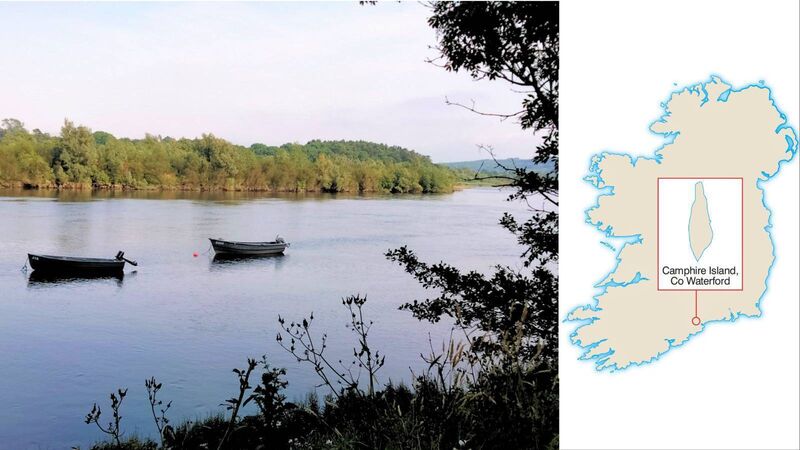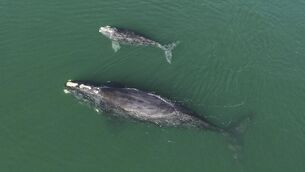Islands of Ireland: Islands lost and new islands formed on Ireland's Rhine

Islands of Ireland: Camphire Island, County Waterford across the river. Picture: Dan MacCarthy
Several islands on the magnificent 169km-long Blackwater River — known as Ireland’s Rhine — have over time been subsumed into the banks of the river. They have become farmland or occasionally wildlife-rich riparian strips. Just east of Fermoy, there was once a fairly large island called Careysville which met such a fate, while further east at Lismore, there are others including Cottage Island identifiable often by a narrow line of trees.
Many of the islands are nameless, perhaps too small to yet be considered islands. Where an island lies especially close to the bank it more than likely will be absorbed first via reed banks, and then some sturdy trees before earth gradually builds up over time. But as old islands are lost, new ones are formed as the river forms and reforms itself on its ceaseless journey.
Camphire Island lies just upriver from the beautiful County Waterford village of Villierstown, immortalised by 1980s Olympic marathon silver medallist John Treacy and the unforgettable commentary by Jimmy Magee.
The island is included in the historic ‘ploughland’ of Camphire along with Camphire House and Castle on the opposite bank of the Blackwater and Camphire Hill, and even a lead mine. A ploughland was a Norman system of land measurement measured by how much land could be ploughed in a year by a team of eight oxen. The name Camphire evolved to its present form through various shades including Campier, Champier, Camphyre, Caimpír. It is derived from the Irish caimthír or ‘land on the bend’.
The island today is overgrown with trees with zero clearance of any description. Like most of the riverine islands, it is spear-shaped, as silt accumulates at one end and builds up on the sides. It is fringed with thick reed banks which means it is earmarked for the riverbank in due course. It is a haven for wildlife, however, including the ubiquitous mallard, plentiful insects, bird species including wagtail, pipit, heron, and egret. There have been occasional sightings of the white-tailed sea eagle too in the area, but it is not thought to be nesting in the area.
And it seems it was ever thus. A 19th-century account of a trip on the river recounts, in the typically florid language of the time: “Camphire Island is in front of us. Its osiers and trees and reeds form a snug breeding place for ducks. The sky with its intense blue and fleecy clouds vividly reminded me of the south of France, Italy and the sunny Mediterranean”.
This stretch of the river, from the bridge at Youghal up as far as Cappoquin, was a very popular regatta haunt in the last decades of the 19th century. The various castles along the river disgorged their wealthy occupants to attend or partake in the regattas. One such in 1875 saw the entire neighbourhood turn out with fishing boats of all classes including cots, as well as canoes and other boats flitting about in all directions, according to a newspaper report.
Four boats competed in one race around Camphire Island with two lead boats vying for victory: the Peri and the Dora. The Dora was the stronger of the pair with the Clonmel Chronicle recording “a Henley crew would be put on their mettle were they pitted against her fair crew". The boats battled a strong ebb tide, and the Dora pulled away from the Peri to take the spoils. The entire race was observed by guests from the decks of a pleasure steamer which used to sail upriver as far as Cappoquin. The newspaper observed: “Her decks were crowded with tourists who had doubtless the good sense in selecting for their holiday one of the loveliest rivers in the world for scenery.”
Camphire Island was occasionally the site of a hunt for hares, as reported in the folklore site Dúchas: “Pat Meade of Lismore took off his boots and ran after a hare and captured him below in Camphire Island”. No year is given, but an informed guess here is the 1930s.
: No ferry. Inquire with blackwaterecotours.ie
: logainm.ie; Clonmel Chronicle 25/09/1875; Dúchas.ie







